Ride A-Bc Splitboard Bindings Review
The Ride A-Bc isn’t a whole new take on splitboard bindings. Ride Snowboards first ever offering makes some small but impressive contributions to an already tried and true system and succeeds at offering us something that feels and looks new, but isn’t.
What is the Ride A-BC Binding?

A simple frame construction, accentuated via a two-tone colorway of black and white, I found these bindings to be aesthetically pleasing. The construction of the straps and ratchets feels like quality engineering and promises to meet the challenge of backcountry durability. The sturdy aluminum base plate has been machine cored out to reduce weight without sacrificing performance.
Out of the box the included hardware is pre-threaded with screws that already have Loctite on them and are ready to be mounted out of the box. No wasted time trying to find the English section of the instruction manual, setting them up was intuitive and a breeze.
How Does the Ride A-BC Binding Work?
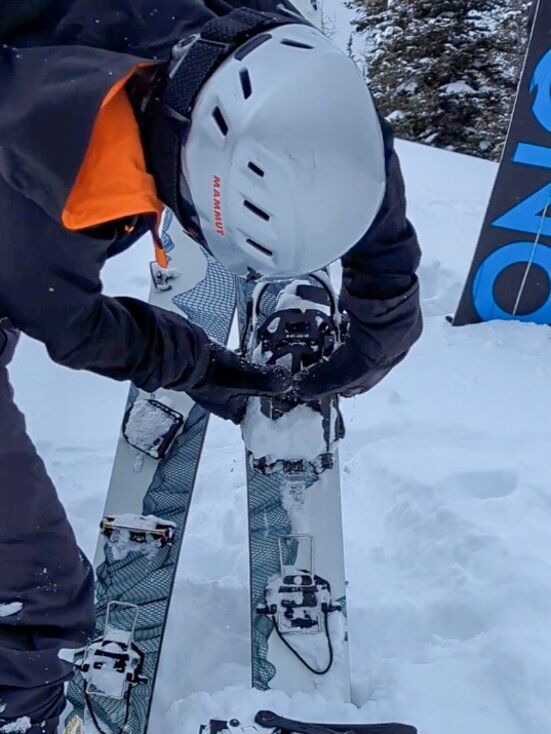
Based on Voile’s aluminum chassis design, a snap ramp in the heel of the binding baseplate locks the binding in place over the board pucks in downhill mode.. The front of the binding baseplate has two hooks that install onto an axle toe piece and provide the pivoting action needed to slide skis uphill.
Classic climbing wires are mounted on the board as well as a built in sliding heel locker should you want to keep your heel locked for a stretch of split skiing.
Ride A-BC Features
The forward lean / hike mode adjustment on these bindings is the best in the business. A firm press snaps the stopper on the highback out of the way and expands the range of stride significantly, more so than any other splitboard binding I’ve ridden (Sparks and Union).
My favorite feature however is the dual flex profile of the ankle strap. The bottom part is softer than the stiffer top part so if you want to soften up the response a bit when conditions are good flip it around so the softer part is on top thereby allowing more flex through the ankle (or vice versa). If you’re like me and you didn’t fit the ankle/heel straps to your boot before going out, not to worry, they feature a tool-less design that makes for painless adjustments.
The high backs are still but due to them being asymmetrical they conform to your calves/ankles better for the traditional “ducked” snowboard stance. This makes the bindings more comfortable and responsive.
Touring Performance
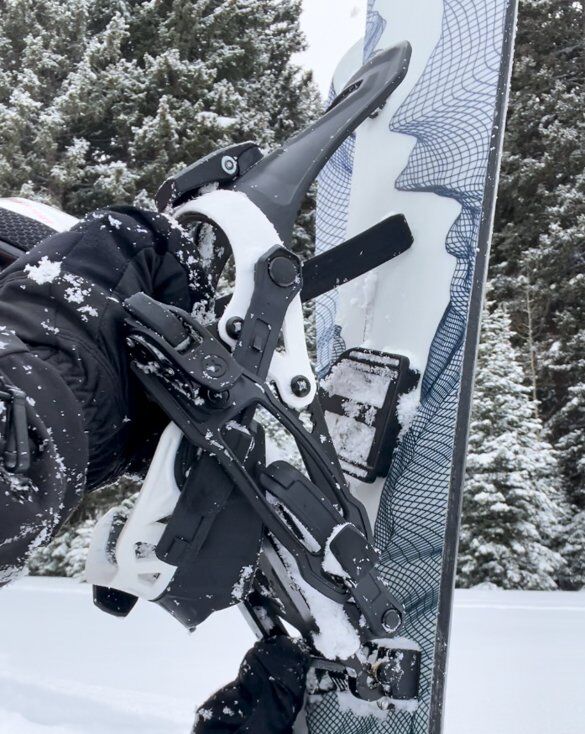
Installing the bindings in hike/uphill mode is harder than it ideally should be. The ankle/toe straps and highbacks need to be pulled out of the way so that the proper angle can be achieved for the hooks to snap onto the axle. Ensuring both hooks are engaged on the axle is likely to require some attention, which, considering the day/hike is just getting started, usually isn’t a problem at all. Once the hooks are seated a small rivet installed on the inside of the hook ensures a really tight fit and eliminates the possibility of them coming off by accident.
This extended range of motion in hike mode enabled skiing at a cross country pace, making light work of the long and flat approach to our intended riding area. Once we reached the skinner (the steepness of which the Wasatch is known for unfortunately) deploying the climbing wires was done efficiently by utilizing the handle of a ski pole.

Our chosen skintrack maintained a reasonable angle and I never had to deploy the second, higher climbing wire, which can be indispensable sometimes, when breaking a new skin track isn’t an option for whatever reason. The articulation of the bindings on the way up was very smooth and presented no problems even when aggressively kick turning with my board-skis covered in a foot of powder.
Summit Transitions

Reversing the hike mode installation process proved to be much easier than the initial install. With a little applied force at the appropriate angle the attachment hooks pop right off. With board halves rejoined, slide the bindings backwards onto the board pucks and secure heel latch. This is unlike other puck based systems that slide forward more intuitively, don’t overthink it however, it’s solid.
In general, puck based systems are passive, meaning the bindings don’t provide any conjoining pressure of the board halves. That then has to come from the splitboard clips on the board, tip and tail that can apply active pressure and reliable alignment of the two board halves. More on that to be said, as Voile really outdid themselves with their new clips featured on the Skyline board I was riding.
The Ride Down
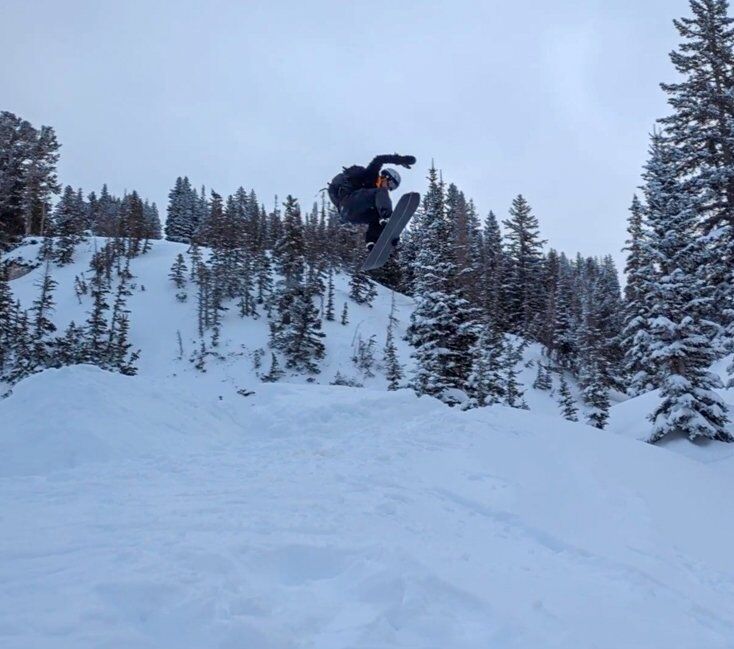
For the review of these Ride Splitboard Bindings I lapped a natural half pipe in a foot of fresh powder. The board feel with these bindings is great and they are very responsive, way more so than was needed for the conditions of the day. The Ride A-Bc Bindings would excel when fast action response is required, such as on really large steep mountain lines with varying snow conditions.
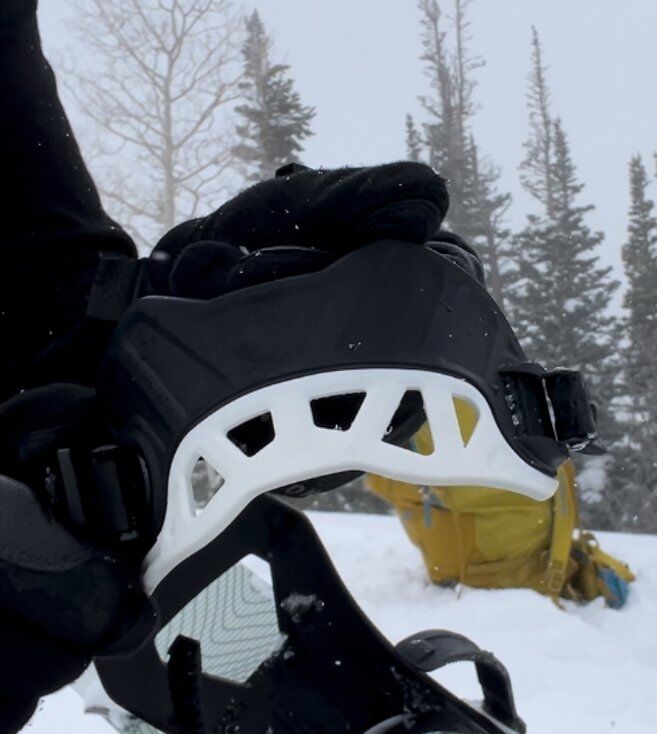
For increased playfulness and a softer response, swap out the dual stiffness ankle straps. I noticed a significant difference after swapping them out between run 1 and run 2 and was impressed with this small refinement on a familiar binding system. With no cushion between your boot and the bare metal chassis footbed these aren’t the most comfortable bindings to ride. By the end of the run, 1,500 vertical feet later, my feet are in dire need of a break and I quickly unstrap to relieve built-up pressure.
A simple solution to increase comfort would be to add some cheap foam padding to the baseplate.
Ride A-Bc Splitboard Bindings Pros & Cons
Pros:
- Aesthetically pleasing two-tone colorway
- Intuitive setup with pre-threaded hardware
- Best-in-class forward lean/hike mode adjustment
Cons:
- Installation in hike mode can be challenging.
- No cushion between boot and chassis.
- Not the most comfortable after long rides.
Overall Impression
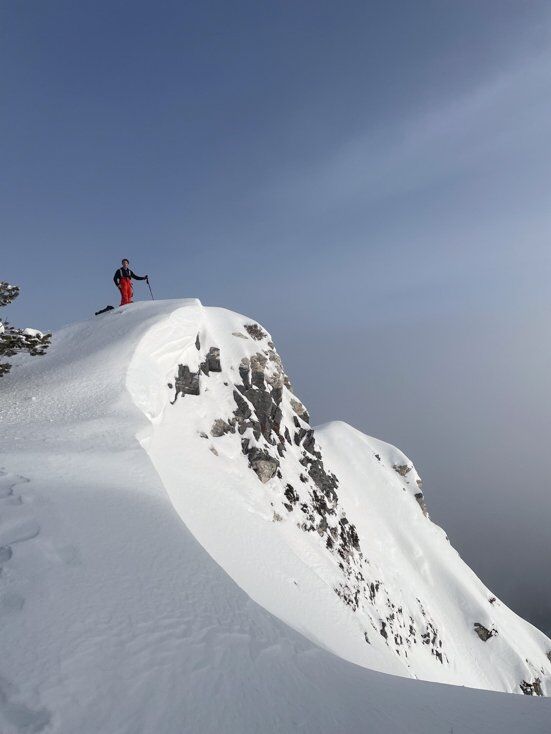
With the ability to be both playful and hard charging these are versatile and reliable bindings for all conditions. The Ride A-Bc Splitboard Bindings ($459.95) really shine on the stride, with a simple design and quality construction they’ll last many a snow season. At around $450 retail these cost about average for splitboard bindings. For that price you’re getting a tried and true system with multiple upgraded features engineered by Ride and an aesthetic that will turn the skin track into a fashion runway.



